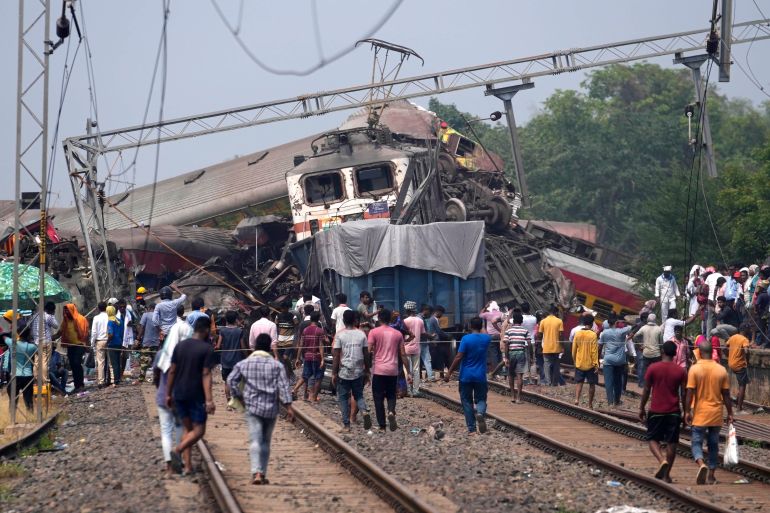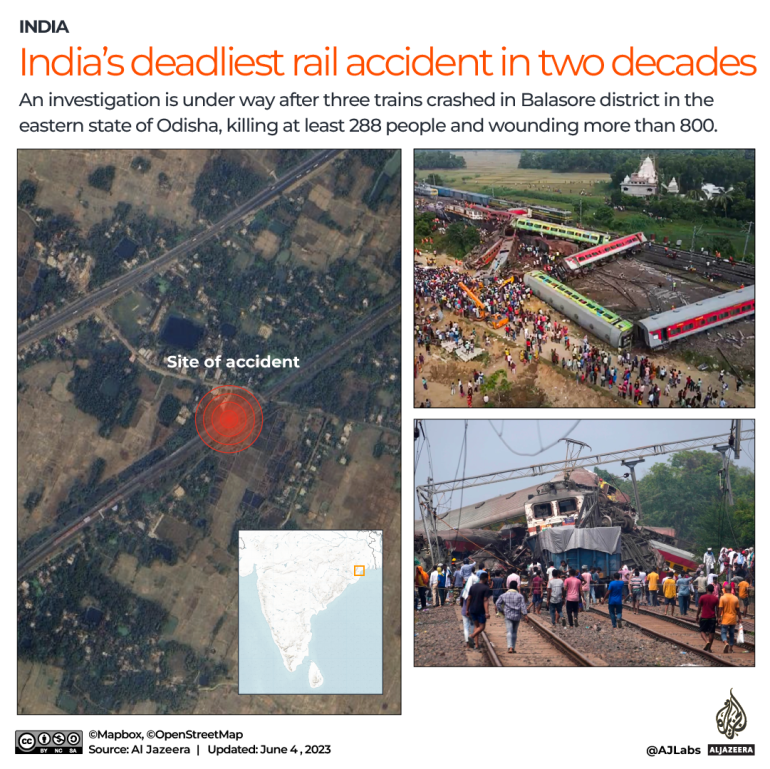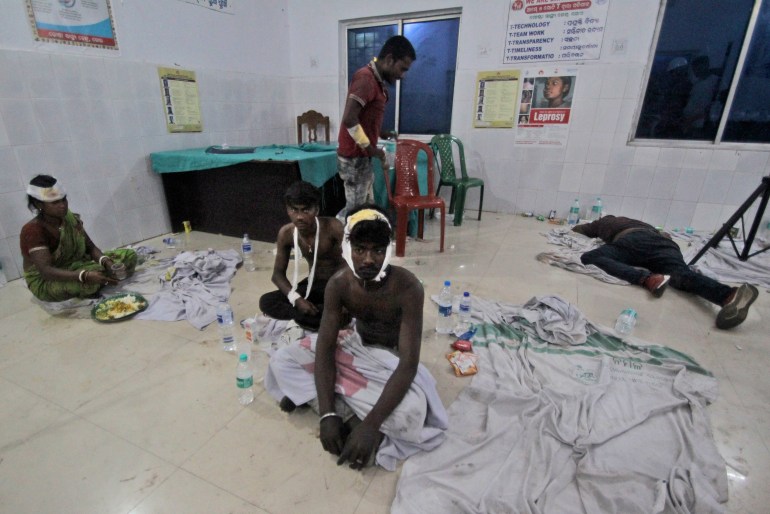India train disaster: What we know so far
The failure of a sophisticated electronic system designed to keep trains from colliding has been blamed for the crash.

An investigation is under way into what caused the devastating three-way crash involving two passenger trains and a freight train in eastern Odisha state on Friday.
In the early evening, a passenger train, the Coromandel Shalimar Express, travelling across the country between Shalimar in West Bengal state and Chennai in Tamil Nadu, hit a freight train carrying iron ore.
The passenger train derailed and hit another passenger train, the Yesvantpur-Howrah Superfast Express, which connects metro cities Bengaluru and Kolkata.
At least 288 people have been confirmed dead, and more than 1,000 injured in what is India’s deadliest train crash in decades.

What was the cause of the crash?
Railway Minister Ashwini Vaishnaw said the crash had occurred “due to a change in electronic interlocking” and that an investigation would show “who was responsible for that mistake”.
An electronic interlocking system is designed to keep railways safe by controlling train movements, operating signals and level crossings, establishing routes and checking rail sections are free.

Before the introduction of an electronic system, signals were operated manually by a series of rods and levers.
If the electronic interlocking system is fully operational, a train will not be given a signal unless the computers deem the route safe and clear of any other traffic.
Speaking to the Indian news agency ANI, Vaishnaw said, “Let the inquiry report come out. But the cause has been identified, and the people responsible for it have been identified.”
KS Anand, chief public relations officer of the South Eastern Railway, told Reuters news agency, “The Coromandel Express was supposed to travel on the main line, but a signal was given for the loop line instead, and the train rammed into a goods train already parked over there. Its coaches then fell onto the tracks on either side, also derailing the Howrah Superfast Express.”
Jairam Ramesh, an MP from the opposition Congress party, attacked the ruling Bharatiya Janata Party (BJJ) for “man-made devastation caused by utter negligence”.
Here’s our detailed statement on the Odisha train tragedy. It goes well beyond headline politics to the very core of how rail safety & track renewals have taken a backseat, while high-profile inaugurations & an obsession with speed get priority. It raises 3 fundamental questions. pic.twitter.com/XdcJdsOIeV
— Jairam Ramesh (@Jairam_Ramesh) June 4, 2023
He accused the BJP of criminal neglect of the “signalling system” as well as skipping railway safety presentations just hours before the accident.
How large is India’s railway network?
India’s railway network is the fourth largest in the world – after the United States, Russia and China – and carries about 13 million passengers on 14,000 passenger trains every day.
Indian Railways, a state monopoly, operate the network, which consists of 64,000km (40,000 miles) of track.
The network is also a lifeline for trade, with more than 1.5 billion tonnes of freight being transported annually.
The railway system was constructed during British colonial rule in the 19th century. The Indian government had recently announced wide-reaching upgrades, including high-speed trains, but many of the upgrades remain years away.
Prime Minister Narendra Modi had been scheduled to unveil a new express line between Goa and Mumbai in western India on Saturday. Instead, he visited the crash site in Odisha, where he promised that those responsible would be punished.
Took stock of the situation at the site of the tragedy in Odisha. Words can’t capture my deep sorrow. We stand committed to providing all possible assistance to those affected. I laud all those working round the clock, on the ground and helping out in relief work.
— Narendra Modi (@narendramodi) June 3, 2023
India’s deadly railway system
Hundreds of accidents occur every year on India’s railways, with most of them blamed on human error or outdated signalling equipment.
According to India’s National Crime Records Bureau (PDF), there were roughly 100,000 railway-related deaths in the country between 2017 and 2021.
In a December report, the Comptroller and Auditor General of India flagged 24 factors responsible for derailments (PDF).
The report titled “Derailments in Indian Railways”, which investigated derailments between April 2017 and March 2021, found that inadequate maintenance of tracks was one of the main contributors to such accidents.
In October 2018, a commuter train tore into a crowd which had gathered to celebrate the Hindu festival of Dussehra in Amritsar in northern Punjab state, killing at least 59 people and injuring many more.
India’s deadliest railway accident was in 1981, when a train plunged off a bridge into a river in Bihar state, killing an estimated 800 people.